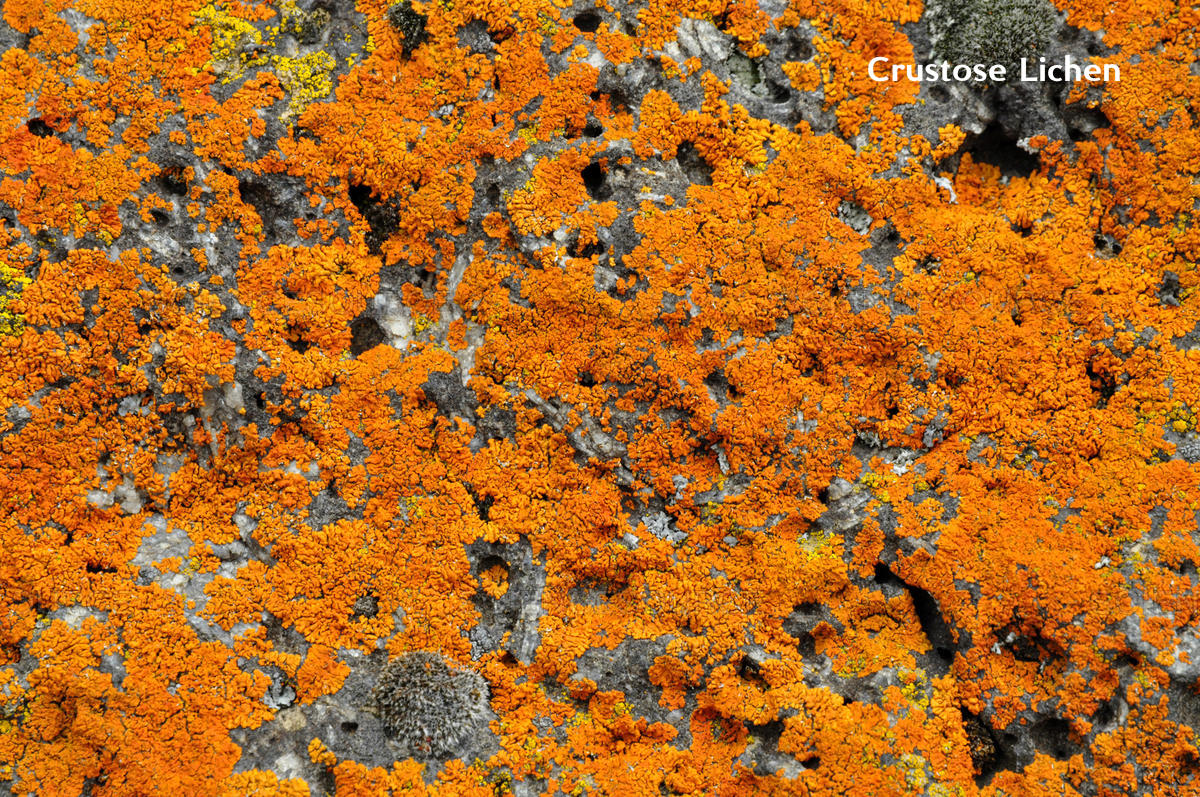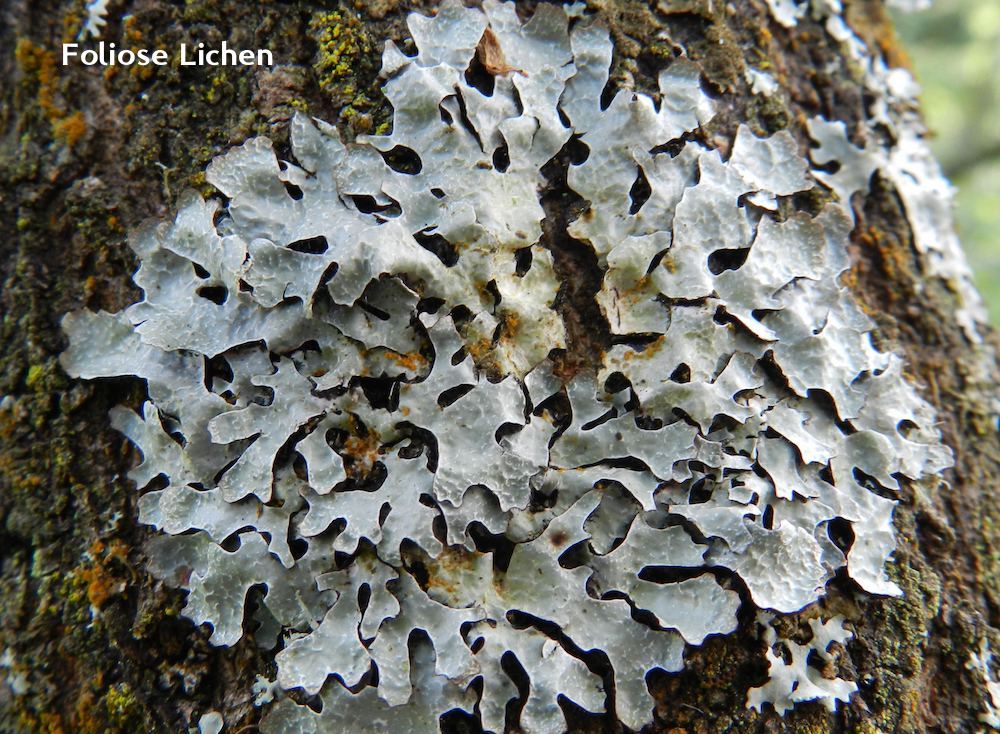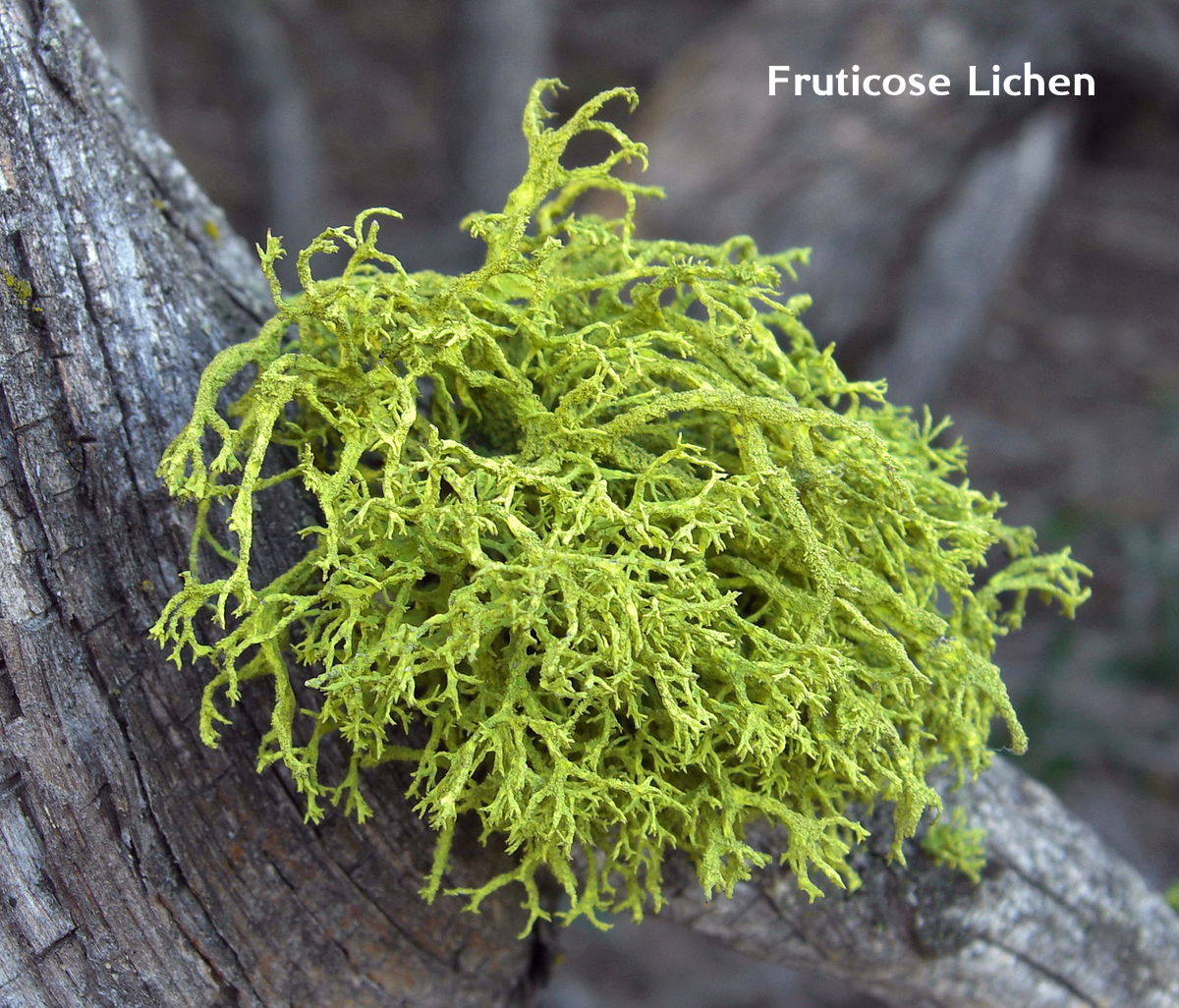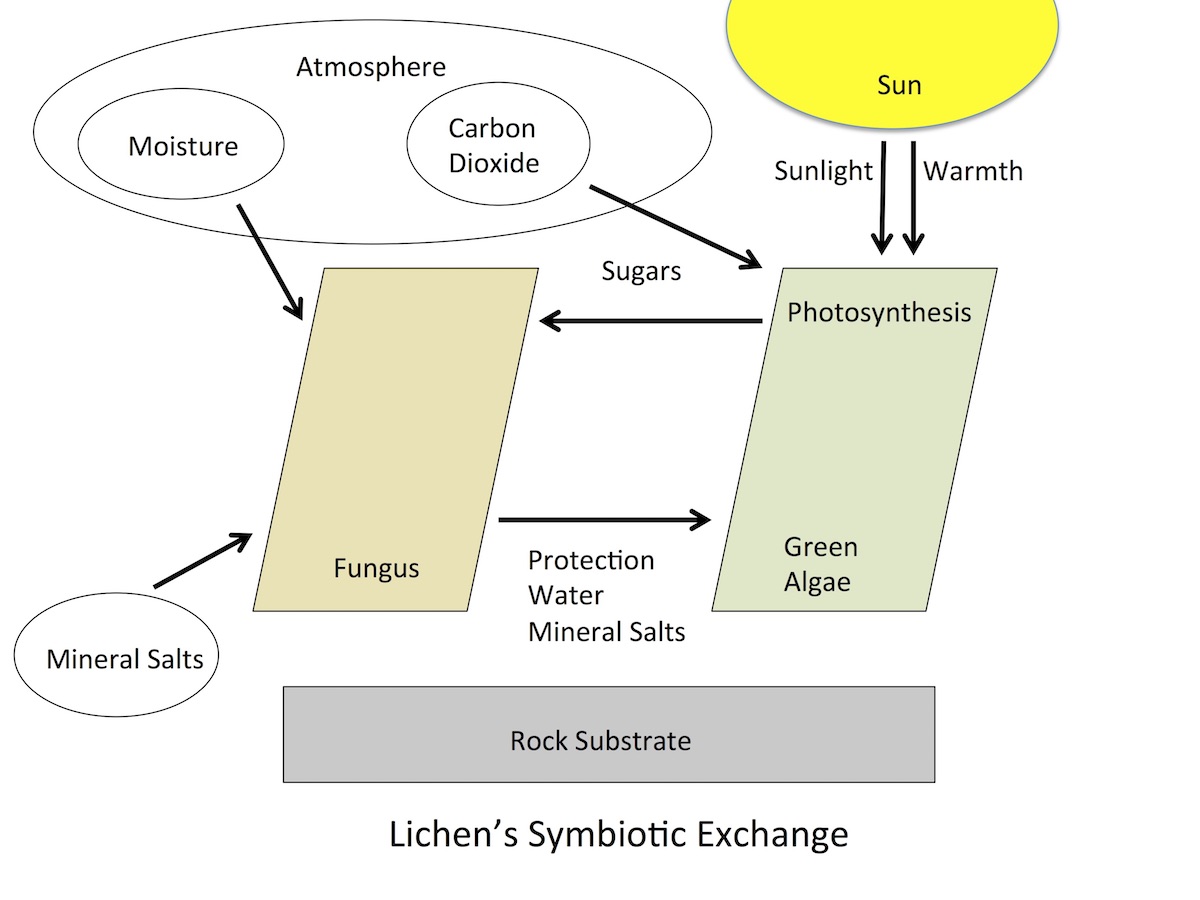The colorful growths appearing on some rock surfaces are living organisms composed of a fungus and an alga growing together to form a lichen. The species of lichen depends on what kinds of fungi and algae grow together. The fungus gives a dwelling place for the algae and harvests minerals for both. The algae photosynthesize and provide food for both.
Lichens come in many colors, sizes, and forms and are sometimes plant-like, but lichens are not plants. They do live through photosynthesis however, like common plants and trees. Lichens may be long-lived, with some considered to be among the oldest living things on the planet,
As many as 20,000 types of lichens exist, classed into three main growth form types: Crustose lichens, Foliose lichens and Fruticose lichens. Crustose lichens usually live tightly attached to their growing surfaces on rocks, trees, soils or buildings. Species of crustose lichens are the slowest growing and the most widely studied in respect to age since they can be used to date geological features and track climatic change. Crustose yellow-green map lichens are possibly the Earth’s oldest organisms. Some found in the Arctic are many thousands of years old. Foliose lichens have leafy lobes that usually grow parallel to the growth surface. Fruticose lichens have a mature branching structure and resemble little bushes or trees, or they can hang down from tree branches. An example is reindeer lichen. Foliose and fruticose lichens grow faster than crustose ones, but all are very slow growing.





Would you like to share your thoughts?
Your email address will not be published. Required fields are marked *